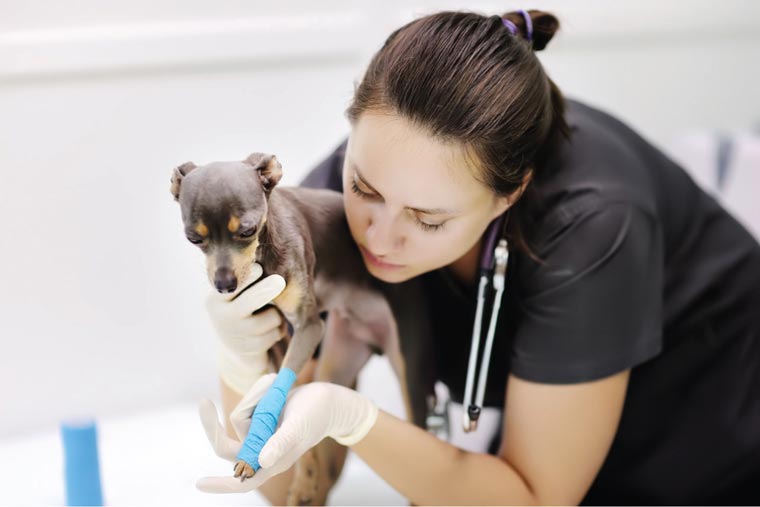
October 15, 2020
Valuing veterinary technicians in practice
“‘We are fully staffed on veterinary technicians’ is a phrase no veterinary practice has said for years,” said Kenichiro Yagi, a registered veterinary technician and president of the National Association of Veterinary Technicians in America. Yagi discussed how to value veterinary technicians in practice during the Aug. 20 session “Technician Issues to Tackle in Practice to Retain Technicians Part I and Part II” at the AVMA Virtual Convention 2020. Two ways to do so involve defining a team structure and distinguishing between a credentialed veterinary technician and a veterinary assistant.
The first step Yagi suggests is to complete a simple assessment to gauge how a practice is using veterinary technicians by separating the tasks performed by veterinarians and those performed by technicians. NAVTA has a form to complete.
“When this assessment was tested, many practices fall into poor utilization of their technicians,” Yagi said.
Low utilization can create problems for technicians within a practice, including increased turnover, decreased morale, stagnated growth, poor job satisfaction, and the potential for antagonistic team dynamics.

Asking the right questions
NAVTA formed the Veterinary Nurse Initiative in 2016 to unite name-change efforts within the profession, while also focusing on issues around credentialing, scope of practice, title protection, and appropriate utilization.
In 2019, the AVMA created the Task Force on Veterinary Technician Utilization, which released a report and recommended solutions in areas such as education, licensing, and wellness. JAVMA News previously reported on the recommendations.
Yagi suggested, during the session, the following questions for practices to ask themselves:
- What is the role of credentialed veterinary technicians versus other team members?
- Is there a different title for credentialed technicians versus other team members?
- Do veterinary technicians get paid fairly, and how do you define fairly?
- Are credentialed veterinary technicians paid differently than other team members, and how do you feel about the difference?
Yagi said a veterinary technician’s wage should be different than for those who are in a position that doesn’t require schooling because what’s the point of going to school otherwise?
“There must be some value to the credentialing that people obtain,” he said. “To retain veterinary technicians better, we must pay generous wages, develop metrics to justify the pay, and establish additional pay for credentials. People are looking for if they are valued, if they’ll be able to do their job and have a sense of purpose in the practice.”
The equine technician
Small animal practices often employ credentialed veterinary technicians, but equine and large animal veterinarians employ mostly veterinary assistants, said Deborah B. Reeder, a licensed veterinary technician who specializes in equine medicine. Reeder spoke about the difference between credentialed veterinary technicians and veterinary assistants, as well as the benefit of employing a credentialed veterinary technician, during the Aug. 21 session “Professional and Ethical Utilization of the Equine Veterinary Technician and Assistant” at the AVMA Virtual Convention 2020.
“Not taking anything away from the assistant, because they’ve been extremely valuable to equine and large animal practices, however, there are stats to show that employing a credentialed veterinary technician can make a difference,” Reeder said.
The reason for the lack of veterinary technicians in equine and large animal practice may be that veterinary technology programs include more information related to small animal medicine. Reeder said many equine and large animal practices consider handling skills to be the primary skill they’re looking for when hiring veterinary paraprofessionals. However, there are significant benefits to hiring a credentialed veterinary technician.
“Ultimately, hiring educated technicians makes financial sense,” Reeder said.
Reeder said credentialed technicians also decrease the risk of malpractice suits, improve practice efficiency, increase customer satisfaction, and create better staff morale.